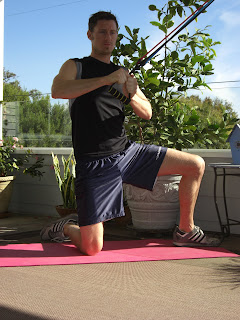


Fitness is not a "one size fits all" arena. I use TRAINING and NUTRITION to propel you toward being the healthiest you possible. It is vital that both your NUTRITION and TRAINING goals are working together. At Time For Change Fitness, our clients don't just sweat - they become educated. Most goals include lifestyle change, and CHANGE is our middle name. This blog is an extension of my training and nutrition services, and is meant to be a resource for timely Health and Wellness information.
Why does Time for Change Fitness promote resistance training?
Many people focus on calories alone. The slash and dash mentality develops destructive patterns, like extreme calorie cuts and/or excessive aerobics. This sets off an alarm-state in the body where the body sheds muscle tissue to lessen energy demands, and stores body fat as a survival response. Once this physiological state is reached, it becomes nearly impossible to lose any more weight no matter how many calories you cut or how much aerobic work you add. What you end up with is a person who is on a starvation level calorie count and performing excessive exercise, yet is still flabby.
The calories burned during an exercise session are relatively small compared to the amount burned during the other 23 hours of the day. Most fat oxidation occurs between training sessions, not during. This means your exercise sessions should primarily be geared towards building muscle and boosting your metabolism.
After a strength training session, the metabolic rate raises (the after-burn effect) for longer periods of time than after aerobic work (up to 48 hours). This is because all of the steps involved in the recovery process from strength training (satellite cell activation, tissue repair, protein synthesis, etc.) require energy (calories).



No comments:
Post a Comment